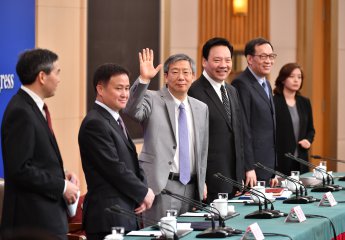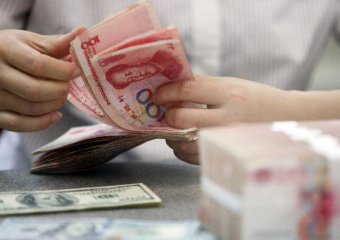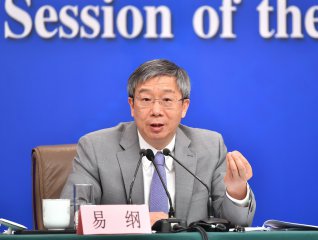
The People’s Bank of China is expected to ease policy less aggressively in 2019 compared with the previous year, while maintaining steady injections of liquidity, according to analysts.
The PBOC will continue to reduce the amount of money lenders have to put aside as reserves, with the earliest cut taking place next quarter and two others in the second half of this year, according to the median estimate of 39 economists and traders in concurrent Bloomberg surveys.
The required-reserve ratio will be lowered by 50 basis points in each three month period, or 150 basis points altogether by the end of the year, the surveys showed. That compares with a total of 250 basis points cut during the same period of 2018.
The central bank is taking more of a back seat this year in terms of the government’s effort to cushion the nation’s economic slowdown. Rather than feeding expectations of monetary easing, policy makers have rolled out more fiscal measures including tax cuts -- an approach that is seeing some success as economists expect a bottoming-out of the growth slide as soon as the second quarter.
“There is a high probability that monetary policy will refrain from further easing at the short-end as China’s stock and property markets recover,” bringing about a need to defend against asset bubbles, said Ji Tianhe, a strategist at BNP Paribas in Beijing. “The benchmark lending rate and policy rates won’t likely be reduced in the following months.”
With a new round of trade talks with the U.S. starting in Beijing this week, the prospects for the world’s two largest economies to ease tensions are improving. The PBOC has been restrained in terms of adding funds via open market operations this month, even if tax collection and quarter-end regulatory checks pushed interbank borrowing costs higher than in January.
What Bloomberg’s Economists Say
“PBOC Governor Yi Gang has made a clear explanation on the thoughts behind the monetary policy during the NPC meetings and has stabilized market expectation. Monetary policy will maintain the status quo in the future with cuts to reserve ratios and other tools all serving the same ultimate goals: one is to keep M2 growth and aggregate financing growth in line with nominal GDP, the other is to continue the tilt toward medium and small-sized enterprises.”-- China economist David Qu
Interest rates will stay on hold in 2019 for both benchmark and the 7-day reverse repurchase agreement rates, the surveys showed.
Nevertheless, the market benchmark 7-day repo rate will nudge down to about 2.5 percent toward the end of the year from 2.8 percent now, traders and analysts said, as cuts to the reserve ratio and other monetary tools such as targeted Medium-term Lending Facility add liquidity to the financial system.
Source: Bloomberg
Translated by Jennifer






















Latest comments